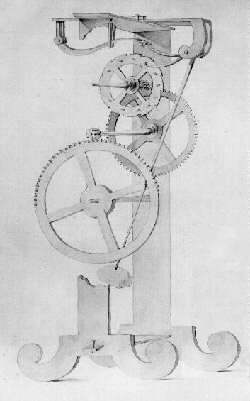Paypay:Galileo Pendulum Clock.jpg
Galileo_Pendulum_Clock.jpg (250 × 401 nga pixel, kadako han fayl: 14 nga KB, MIME nga tipo: image/jpeg)
Kaagi han paypay
Pidlita an adlaw/oras para makit-an an fayl nga naggawas hito nga oras.
| Pitsa/Oras | Thumbnail | Mga dimensyon | Gumaramit | Komento | |
|---|---|---|---|---|---|
| waray pa kasasapawi | 15:43, 3 Mayo 2021 |  | 250 × 401 (14 nga KB) | Materialscientist | tidied |
| 10:53, 22 Nobyembre 2007 |  | 250 × 401 (11 nga KB) | Chetvorno | {{Information |Description=Drawing of pendulum clock designed by Galileo Galilei around 1641. Although the source says the drawing is 'by' Galileo, it is undoubtedly the one drawn by his student Vincenzo Viviani in 1659, since Galileo was blind by the ti |
Mga Sumpay
An mga nasunod nga mga pakli nasumpay hini nga paypay:
Global file usage
An masunod nga iba nga mga wiki in nagamit hini nga file:
- Paggamit ha bg.wikipedia.org
- Paggamit ha bn.wikipedia.org
- Paggamit ha ca.wikipedia.org
- Paggamit ha en.wikipedia.org
- Paggamit ha eo.wikipedia.org
- Paggamit ha es.wikipedia.org
- Paggamit ha gl.wikipedia.org
- Paggamit ha he.wikipedia.org
- Paggamit ha hr.wikipedia.org
- Paggamit ha ja.wikipedia.org
- Paggamit ha ms.wikipedia.org
- Paggamit ha ru.wikipedia.org
- Paggamit ha sh.wikipedia.org
- Paggamit ha simple.wikipedia.org
- Paggamit ha vi.wikipedia.org
- Paggamit ha zh.wikipedia.org
